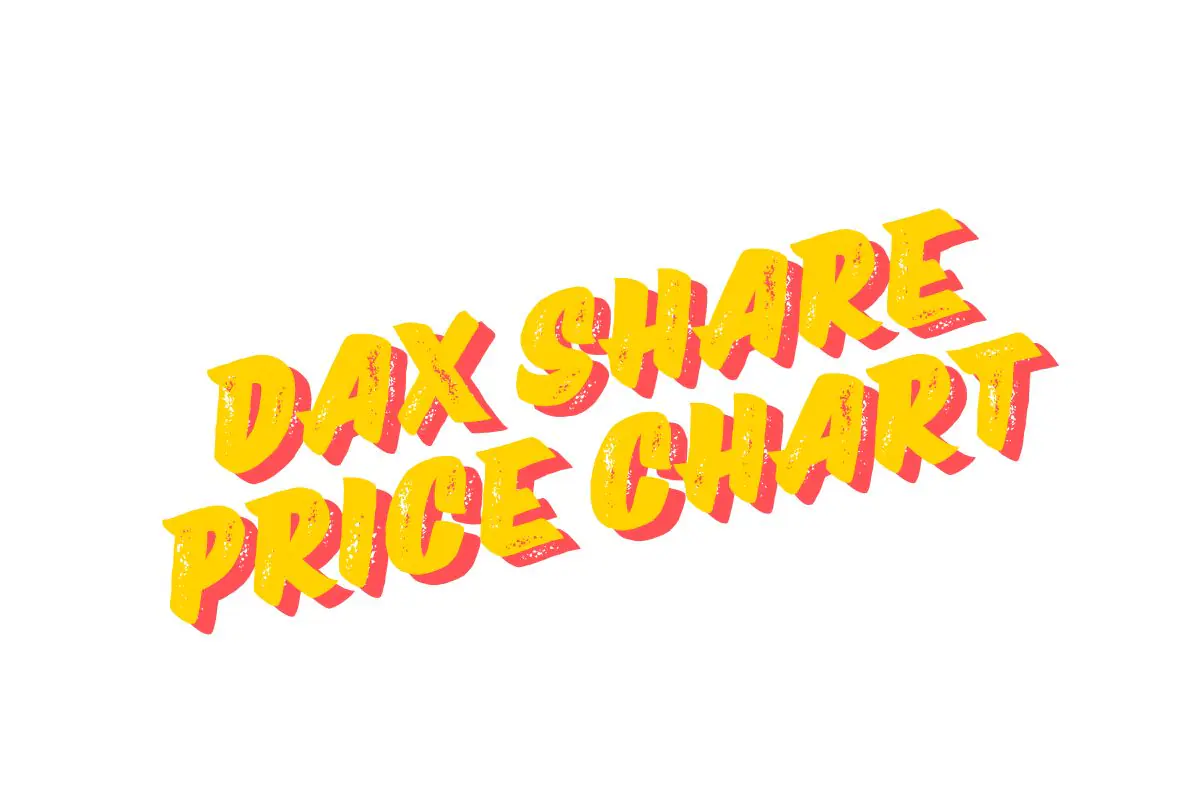Dax Share Price Chart : The Dax Share Price Chart serves as a critical indicator of the German stock market’s performance, tracking the value of the Dax Index comprised of the top 30 companies on the Frankfurt Stock Exchange. Understanding the historical trends, factors influencing price movements, and global events impacting the Dax share price is essential for investors and analysts alike.
This article delves into an in-depth exploration of the Dax Share Price Chart, providing insights into its historical performance, key influencing factors, technical analysis, global impact, comparisons with other major indices, and forecasting future trends.
Introduction to Dax Share Price
Overview of Dax Index
Dax Share Price Chart : If you’ve ever peeked at financial news, you might have come across the Dax Index, Germany’s stock market powerhouse. It’s like the Beyoncé of stock indexes, full of big names and making waves in the financial world. The Dax Index represents the top 30 companies listed on the Frankfurt Stock Exchange, showcasing Germany’s economic muscle.
Significance of Dax Share Price
The Dax Share Price is more than just a number flashing on a screen. It’s like a mood ring for the German economy, reflecting investor sentiment, economic health, and global trends. When the Dax sneezes, the financial world catches a cold. Keeping an eye on its movements can give you a peek into the pulse of the European markets.
Historical Performance of Dax Index
Key Milestones in Dax Index History
Dax Share Price Chart : The Dax Index has seen its fair share of rollercoaster rides since its inception in 1988. From weathering economic storms to riding high on booming industries, the Dax has had its moments in the spotlight. It’s like a time capsule of Germany’s economic journey, with each milestone shaping its trajectory.
Historical Trends and Patterns
If patterns were fashion trends, the Dax Index would be a runway show. From bullish runs to bearish retreats, the Dax’s historical performance is a tapestry of market movements. Understanding these trends can help investors spot opportunities, navigate risks, and maybe even impress friends at a dinner party with some market trivia.
Factors Influencing Dax Share Price
Economic Indicators
The Dax Share Price doesn’t just dance to its own tune; it takes cues from economic indicators like GDP growth, inflation rates, and unemployment figures. It’s like playing a giant game of economic chess, where every move on the board can impact the share prices of Dax-listed companies.
Company Performance
Behind every share price tick is a company’s performance pulling the strings. Strong earnings reports, strategic decisions, and market positioning can make the Dax companies shine or stumble. It’s like a corporate soap opera, with each company playing a role in the Dax’s daily drama.
Impact of Global Events on Dax Share Price

Political Events
Global events can throw a curveball at the Dax Share Price faster than you can say “volatility.” Political unrest, trade tensions, and geopolitical shifts can send shockwaves through the market, leaving investors scrambling to adjust their portfolios. It’s like watching a high-stakes poker game where the Dax holds all the cards.
Economic Crises
When economic crises hit, the Dax Index feels the heat. Whether it’s a financial meltdown, a recession, or a pandemic-induced market frenzy, economic crises can send the Dax Share Price on a wild ride. It’s like navigating a stormy sea, with investors holding onto their hats and hoping for calmer waters ahead.### 5. Technical Analysis of Dax Share Price Chart
Chart Patterns and Indicators
Let’s get down to the nitty-gritty of what all those lines and squiggles on a price chart actually mean. Chart patterns like head and shoulders, double tops, and cup and handles can give us clues about where the Dax share price might be headed next. Plus, indicators like moving averages, RSI, and MACD can help us gauge the momentum and strength of the trend. It’s like reading the tea leaves of the stock market, but with more math involved.
Sector Analysis
Ever wondered why certain stocks move together or why some sectors outperform others? Sector analysis delves into the different industries that make up the Dax index and how they influence each other. From tech titans to pharmaceutical powerhouses, understanding sector dynamics can give us a better grasp of what drives the Dax share price up or down.
Comparisons with Other Major Indices
Differences in Index Composition
Not all indices are created equal. While the Dax focuses on top German companies, other major indices like the S&P 500 or the Nikkei 225 have their own unique compositions. Variations in sector weightings, market capitalization, and even geographical diversification can lead to different performance outcomes. It’s like comparing apples to oranges, but with a lot more money at stake.
Performance Comparisons
Who doesn’t love a good old-fashioned showdown? Comparing the Dax’s performance with other major indices can give us insights into global market trends and relative strength. Whether the Dax is outperforming its peers or lagging behind, understanding how it stacks up can help us make more informed investment decisions. It’s like a stock market Olympics, but with fewer medals and more market cap.
Forecasting Future Trends in Dax Share Price
Market Analyst Predictions
Crystal balls might be in short supply, but market analysts are here to save the day. By crunching numbers, analyzing trends, and maybe a bit of magic, these financial wizards offer insights into where the Dax share price might be headed next. Whether they predict a bullish rally or a bearish retreat, their forecasts can guide investors in navigating the choppy waters of the stock market.
Risk Factors to Consider
But wait, it’s not all rainbows and unicorns in the world of stock forecasting. Risk factors lurk around every corner, ready to throw a wrench in even the best-laid plans. From economic downturns to geopolitical tensions, understanding and mitigating these risks is crucial for safeguarding investments. So, while predicting the future is fun and all, don’t forget to keep an eye out for those storm clouds on the horizon.
In conclusion, the Dax Share Price Chart serves as a valuable tool for investors to gauge the performance and trends of the German stock market. By analyzing historical data, considering various influencing factors, and staying informed about global events, stakeholders can make more informed decisions about their investments. Whether utilizing technical analysis or comparing the Dax Index with other major indices, understanding the dynamics of the Dax Share Price Chart is essential for navigating the ever-changing landscape of the stock market.
FAQ
How often is the Dax Share Price Chart updated?
The DAX Share Price Chart is typically updated in real-time during trading hours. This means you can see live price movements as they happen. Most financial websites and trading platforms update the chart continuously throughout the trading day, reflecting the latest market data.
What are some common factors that influence the DAX share price?
Several factors can influence the DAX share price, including economic indicators (like GDP growth, unemployment rates, and inflation), political events, company earnings reports, changes in interest rates, and global market trends. Additionally, investor sentiment and external shocks, such as natural disasters or geopolitical tensions, can also impact the DAX share price.
How can investors use the DAX Share Price Chart for forecasting future trends?
Investors can use the DAX Share Price Chart for forecasting future trends by analyzing historical price patterns, identifying support and resistance levels, and using technical indicators such as moving averages, By studying these patterns and indicators, investors can make informed predictions about potential future price movements.
Are there any tools or resources available for conducting technical analysis on the DAX Share Price Chart?
Yes, there are numerous tools and resources available for conducting technical analysis on the DAX Share Price Chart. These include online platforms like TradingView and Bloomberg, which offer a variety of technical indicators and charting tools. Additionally, many brokerage firms provide clients with access to advanced charting software and educational resources to help them perform technical analysis.

